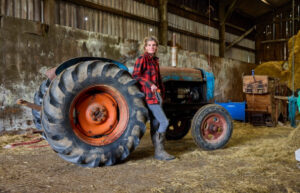Lowest number of children walking to school in rural areas since records began

The number of children walking to school in rural areas across the country is plummeting, while car journeys continue to increase. In the most rural parts of England, this is particularly acute with the numbers of pupils walking to school having fallen by 41% in just one year.
New analysis from HomeRun, a technology company focused on improving the school run, reveals that between 2022 and 2023 (the most recent figures available) the number of children walking to school in rural areas fell from almost 35% to just 25% – while half of all pupils were driven to school. In rural villages, just one in ten (10%) of pupils walk to school – this is the lowest level of walking to school in these rural areas since records began 20 years ago. In all areas (rural and urban), the percentage of pupils walking to school has fallen by 4% since 2005 while the percentage being driven has risen by 23%. (1)
image.png
These peak-time driven trips can create congestion, carbon emissions and air pollution. CO2 emissions are particularly problematic for rural school journeys which generate up to 5 times more CO2 than those in urban areas. (2)
This harmful trend is despite hundreds of millions being spent by Active Travel England to boost walking and cycling rates across the country. The school run is one of the biggest causes of congestion on our roads, associated with nearly a third of all traffic during the morning and evening rush hours. (3)
At the same time, more than 22,000 pupils in 20 county council areas have lost free travel to school in the last three years, according to research undertaken by the County Councils Network (CCN). (4)
Pooya Kamvari, the CEO of HomeRun, said:
“There is no doubt that children attending school in more rural parts of the country have been left out of the active travel funding boom seen since the pandemic. Politicians, local authorities, and parents need the right data and tools to plan better school journeys for everyone. Providing a better way to travel to school irrespective of where people live will reduce both congestion, carbon emissions, and enable children to breathe cleaner air. We must ensure that we do more to avoid creating these unjust health inequalities.”
The school run has been a persistent social and environmental challenge for decades, often with nothing changing year to year and little innovation to speak of. But that might be about to change.
HomeRun, already a leader in the sustainable travel sector through a school app which creates verified journey-sharing communities, recently won a share of £1.6 million funding from Innovate UK’s Transport Decarbonisation Demonstrator. (5)
The project will address the fact that 95% of UK schools lack up to date travel information, which undermines the effectiveness of public spending to increase sustainable and active commuting, particularly in rural areas. (6)
image.png
The project will involve the modelling and analysis of school run data across Essex, through a new product called HomeRun STEP. The platform will then be used to design and quantify the top value for money sustainable travel interventions across Essex, while also enabling car sharing and park and stride solutions aimed at more rural areas.
Mark Ash, Executive Director from Essex County Council, said:
“The journey to school is one of the biggest transport issues the country faces. HomeRun STEP will provide invaluable insight into existing travel patterns to support our strategies and future projects, enabling hyperlocal solutions based on data.
“By providing invaluable insights into both existing travel patterns and the realistic potential for sustainable travel across all schools in Essex (around 550), STEP will allow us to focus resources on schools where there is the greatest need and the most impact can be made. This will help ensure that every pound spent on active and sustainable travel is spent fairly and effectively.”




